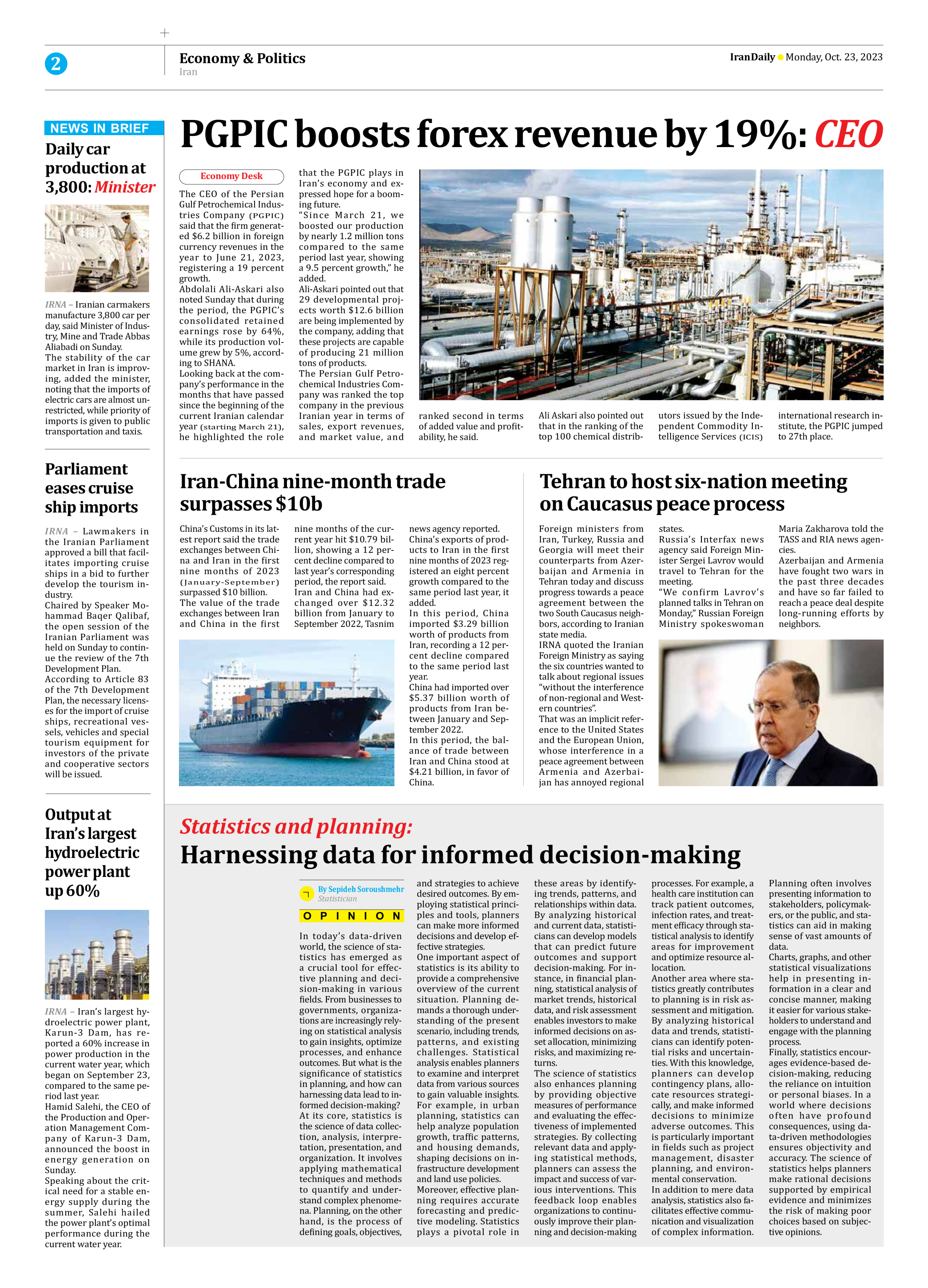
Statistics and planning:
Harnessing data for informed decision-making
By Sepideh Soroushmehr
Statistician
In today’s data-driven world, the science of statistics has emerged as a crucial tool for effective planning and decision-making in various fields. From businesses to governments, organizations are increasingly relying on statistical analysis to gain insights, optimize processes, and enhance outcomes. But what is the significance of statistics in planning, and how can harnessing data lead to informed decision-making?
At its core, statistics is the science of data collection, analysis, interpretation, presentation, and organization. It involves applying mathematical techniques and methods to quantify and understand complex phenomena. Planning, on the other hand, is the process of defining goals, objectives, and strategies to achieve desired outcomes. By employing statistical principles and tools, planners can make more informed decisions and develop effective strategies.
One important aspect of statistics is its ability to provide a comprehensive overview of the current situation. Planning demands a thorough understanding of the present scenario, including trends, patterns, and existing challenges. Statistical analysis enables planners to examine and interpret data from various sources to gain valuable insights. For example, in urban planning, statistics can help analyze population growth, traffic patterns, and housing demands, shaping decisions on infrastructure development and land use policies.
Moreover, effective planning requires accurate forecasting and predictive modeling. Statistics plays a pivotal role in these areas by identifying trends, patterns, and relationships within data. By analyzing historical and current data, statisticians can develop models that can predict future outcomes and support decision-making. For instance, in financial planning, statistical analysis of market trends, historical data, and risk assessment enables investors to make informed decisions on asset allocation, minimizing risks, and maximizing returns.
The science of statistics also enhances planning by providing objective measures of performance and evaluating the effectiveness of implemented strategies. By collecting relevant data and applying statistical methods, planners can assess the impact and success of various interventions. This feedback loop enables organizations to continuously improve their planning and decision-making processes. For example, a health care institution can track patient outcomes, infection rates, and treatment efficacy through statistical analysis to identify areas for improvement and optimize resource allocation.
Another area where statistics greatly contributes to planning is in risk assessment and mitigation. By analyzing historical data and trends, statisticians can identify potential risks and uncertainties. With this knowledge, planners can develop contingency plans, allocate resources strategically, and make informed decisions to minimize adverse outcomes. This is particularly important in fields such as project management, disaster planning, and environmental conservation.
In addition to mere data analysis, statistics also facilitates effective communication and visualization of complex information. Planning often involves presenting information to stakeholders, policymakers, or the public, and statistics can aid in making sense of vast amounts of data.
Charts, graphs, and other statistical visualizations help in presenting information in a clear and concise manner, making it easier for various stakeholders to understand and engage with the planning process.
Finally, statistics encourages evidence-based decision-making, reducing the reliance on intuition or personal biases. In a world where decisions often have profound consequences, using data-driven methodologies ensures objectivity and accuracy. The science of statistics helps planners make rational decisions supported by empirical evidence and minimizes the risk of making poor choices based on subjective opinions.







